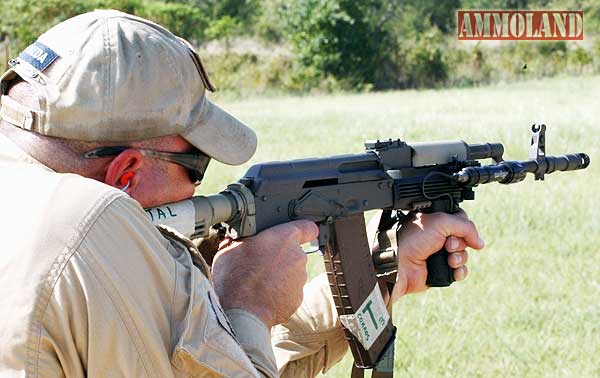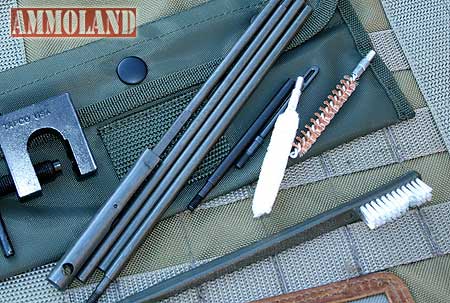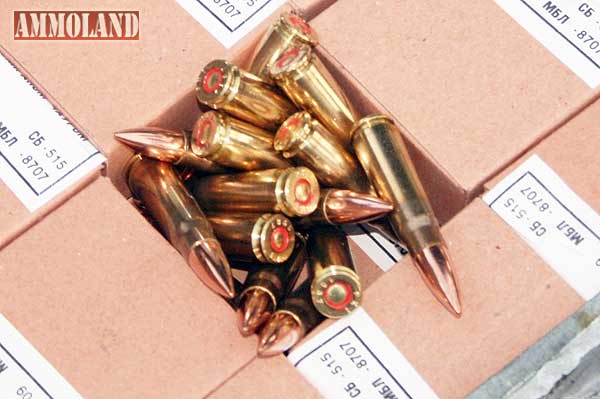Paul Markel 2013
Corrosive Ammo, is it a blessing or a curse? How to use it and keep your guns safe.


LUVERNE, AL –-(Ammoland.com)-It’s 2013 and the Great Ammo Crisis has yet to completely abate.
Perhaps if you could convince all of your friends and relatives to stop buying every box of .22 LR or .45 ACP they find, the amount of ammunition on the shelves would increase, but I don’t see that happening any time soon.
American ammunition makers are building and delivering small arms ammo as fast as they can, but they simply cannot meet the 1000 percent demand that spike between November and December of 2012.
Wholesalers and retailers nationwide have been beating the bushes for ammo sources to satisfy their customs. Much of what they are coming up with is foreign manufactured ammunition in surplus lots. A good deal of this is surplus ammunition uses smokeless powder but corrosive primers.
Is corrosive ammunition the answer or are we just asking for trouble?
The Corrosive Ammo Conundrum
First off, when many gun owners hear the term “corrosive” they run for the hills. They view corrosive ammunition as archaic, something from the dark ages. The truth of the matter is that we fought all of World War II with corrosive ammunition. That’s right, your grandpa’s M1 Garand ran exclusively on corrosive ammunition. Corrosive primers had a good reputation for reliability and long term storage both important factors for military ammunition.
While the United States Military began to phase out corrosive primer ammunition in the 1950’s, many nations throughout the world continued to use them right up to the Vietnam-era and beyond. Military ammunition must meet rigorous requirements. Corrosive primers do not equal cheap or poorly made ammo. When many folks see the word “corrosive” they think “junk”.
Friends, this simply is not the case.
Corrosive Ammo Field Testing
As couple of years ago a good friend of mine set up a T&E session at the Tac-Pro Shooting Center outside of Mingus, Texas. Our goal was to test corrosive and non-corrosive ammunition side by side.
For three days under hot Texas sun we shot rifles from CQB distance out to 300 meters using surplus ammunition from the former Soviet Bloc, brass cased U.S. training ammo, and match grade fodder from big named makers. Firearms came from Colt, DPMS, Ruger, Adams Arms, Krebs Custom and Century Arms International. Ammunition included corrosive military surplus as well as factory fresh from Hornady, Federal, and Winchester.
Accuracy is always subjective. There are a lot of factors to take into consideration. The biggest variable of course is the shooter. Even expert shooters have bad days. Not every shooter will favor every rifle. To discover some kind of average there were a half a dozen shooters firing numerous rifles each day.
On the mornings of day one and two we benched the guns at 100 yards and slow-fired them to record accuracy and average group sizes. Later we ran numerous close-in drills from seven to twenty-five yards firing multiple round exercises. One afternoon we moved out to the long range and engaged reactive steel targets at 300 meters.
At the close of the event we had a good amount of data to consider. In the accuracy department there were some surprises as well as confirmations. In the 5.55mm/.223 Remington department, the match grade ammunition posted the best results. The Colt, Ruger, and DPMS rifles were all equipped with Leupold Mark4 Riflescopes. Shot groups averaged below one inch at a distance of 100 yards. However, the less expensive training ammunition still proved worthy. Even with corrosive primed ammunition the AR style rifles posted one to two inch shot groups.
The 5.45x39mm surplus corrosive ammunition averaged in the two to three inch range. The Silver Bear zinc cased ammo was tighter and the new Hornady lacquered steel 5.45x39mm ammunition was better still.
Moving out to three hundred meters, we had several reactive steel targets include half-silhouettes and a 2’x2’ plate. Firing the Ruger SR556 I was able to call my own hits through the high-powered Leupold scope.
For a real challenge I used AK’s in both 5.45 and 7.62 topped with XS Big Dot rifle sights. During this exercise I needed the assistance of a spotter to help me get on target and call out hits. Once I had my hold figured out hits on the two foot steel plate came with regularity, not every time but they were there. For a platform and ammunition that is denigrated for lack of accuracy this was pretty impressive.
As for reliability, all of the firearms began the test clean and well lubricated. All the guns had several hundred rounds of ammunition of all classes run through them. The only gun to go down during the trials was my buddy’s personally owned Mini-14. All the AR’s and AK’s ran without issue.
We even had two of the new Ruger Mini-30 “Tactical” carbines. Despite being run with dirty, surplus ammunition the Mini-30s kept trucking along.

Corrosive Ammo Cleaning
I suspect there is a direct correlation between the rampant popularity of the polymer framed pistol and death of the gun cleaning ethic. For some unbeknownst reason, shooters today don’t feel like they should clean their guns. ( See: How to clean your Ar15 ) Folks, firearms are simply machines made from steel, aluminum, plastic, and wood. Any machine, be it an automobile, chainsaw, or firearm runs best when it is clean and well-lubricated. You wouldn’t run your car or truck engine dirty, without oil would you? The same thing applies to guns.
What we found in our test and I’ve affirmed on my home range is that the biggest areas on the gun in danger of corrosion are the barrel, bolt/action, and any type of muzzle brake or flash suppressor. Corrosive Ammo primers leave behind a residue of potassium chloride and/or sodium chloride. These attract and hold moisture in/on the steel of your firearm.
Step number one, purchase a cleaning kit with appropriate sized rods, patch eye, and brass bore brush. If you own an AR or AK-74 this is a simple proposition and innumerable surplus M-16 cleaning kits abound at bargain prices. Along with the cleaning kit pick up a lubricating/protecting gun oil. There are many. CLP and Break-Free are the same products. I use Friction Defense from Brownells quite a bit. Just recently I’ve been introduced to FrogLube and this product seems to have tremendous potential.

A basic cleaning kit and oil are all you’ll need if you shoot standard, non-corrosive ammunition. If you know you are shooting corrosive ammo or you aren’t sure because it is surplus from a gun show you’ll need ammonia. Don’t worry about buying pure ammonia in bulk. Just pick up a squirt bottle of the blue window cleaner. ( IE: Windex ) Beware, they make “non-ammonia” window cleaner now. The generic brand from your local discount store will set you back a dollar or two at most.
After you are done shooting your corrosive ammunition for the day, squirt the window cleaner liberally from the chamber down the barrel. Pull the bolt / bolt carrier / op rod if there is one and douse them as well. A couple of old cotton t-shirts will come in handy. A cotton barrel swab is a nice accessory but you can make do with patches.
Some folks will rinse all of the ammonia and loosened corrosive salts off with hot water. Others prefer to wipe it all down and let the ammonia evaporate. Either way, once the corrosive salts have been tackled with the window cleaner, it is time for an all-purpose brush (old toothbrush) and some gun oil.
Scrub off the built up carbon on the bolt mechanism and operating rods if applicable. Use the brass bore brush and patches to clean up the barrel. Remember, it’s always a good idea to brush the bore from the chamber forward. Do not scrub back and forth. For precision rifles care must be taken not to mar or damage the barrel crown.
For more Gun cleaning tips visit Otis Gun Care’s Video Demonstration Page: http://www.otisgun.com/Support/How_To_Videos.asp
Areas of the action where metal moves against metal should be lubricated thoroughly. Any carbon steel should receive a light coating of lubricant. Reassemble the gun and you are ready for the next session.

Corrosive Ammo Parting Thoughts
I hope we’ve dispelled the myth that corrosive ammunition is somehow by definition junk. Your father, grandfathers, or great-grandfathers used it during WWI, WWII, and Korea and it served them well.
If you actually clean your guns and don’t mind putting a little extra effort into maintenance, corrosive ammo just might be the ticket. It is available in bulk lots of a thousand rounds or more at prices that are tough to beat.
That’s a lot shooting, a lot of training, and a lot of fun.
Paul Markel c 2012
Follow Paul Markel at Student of the Gun.com .
